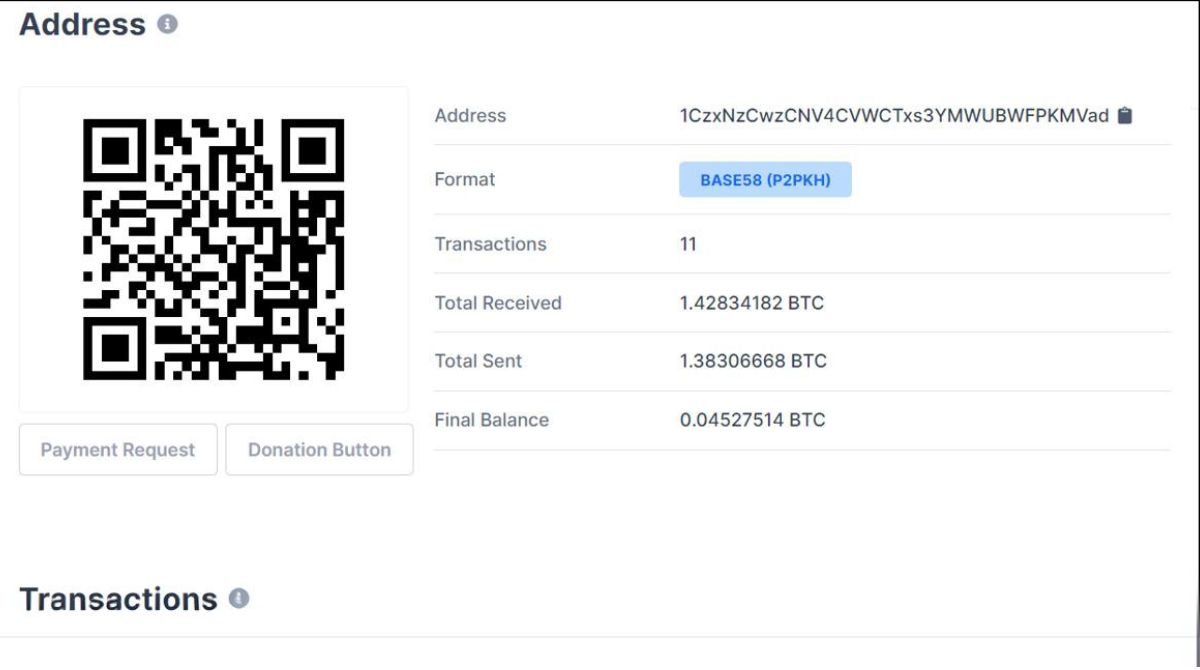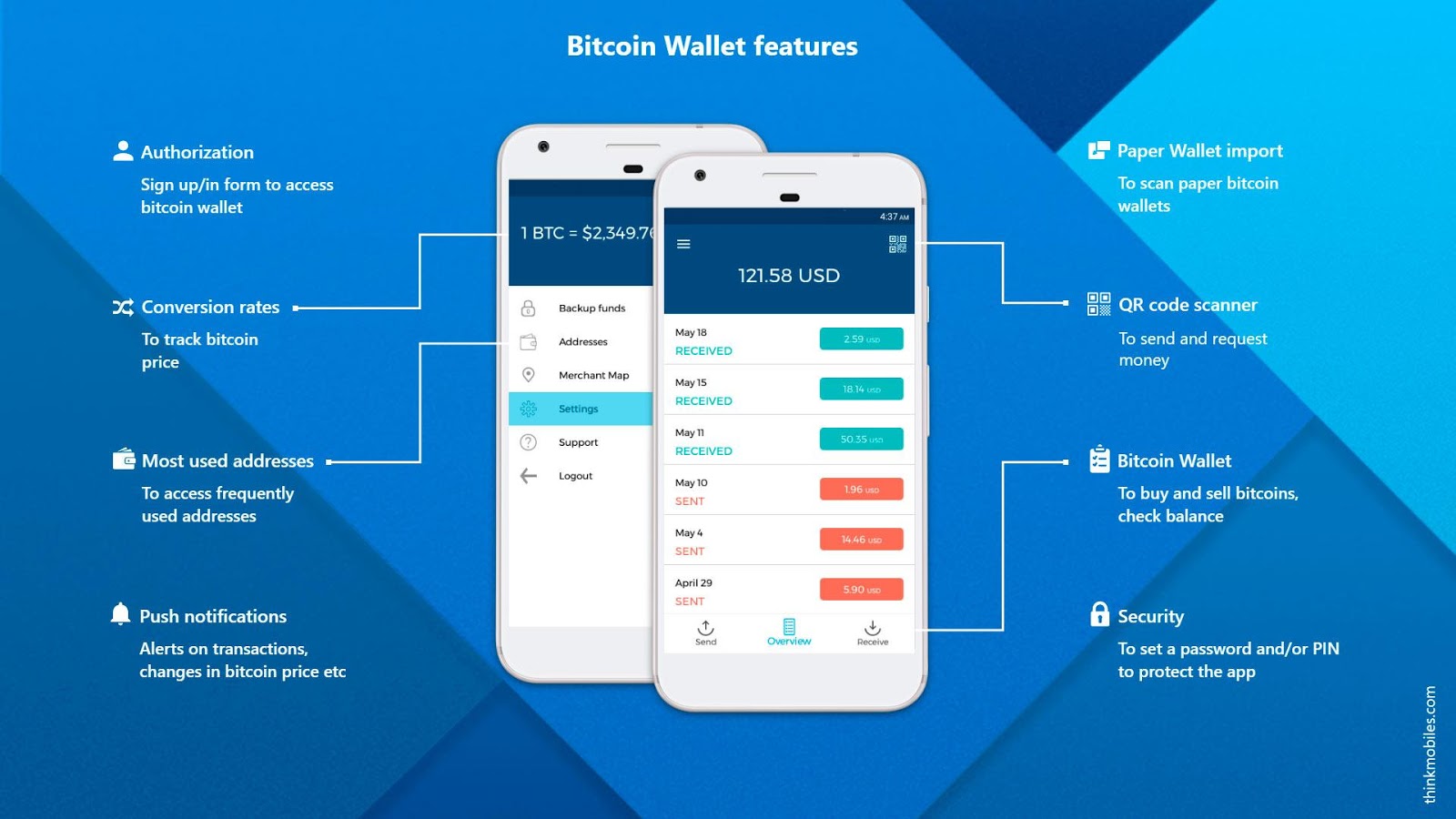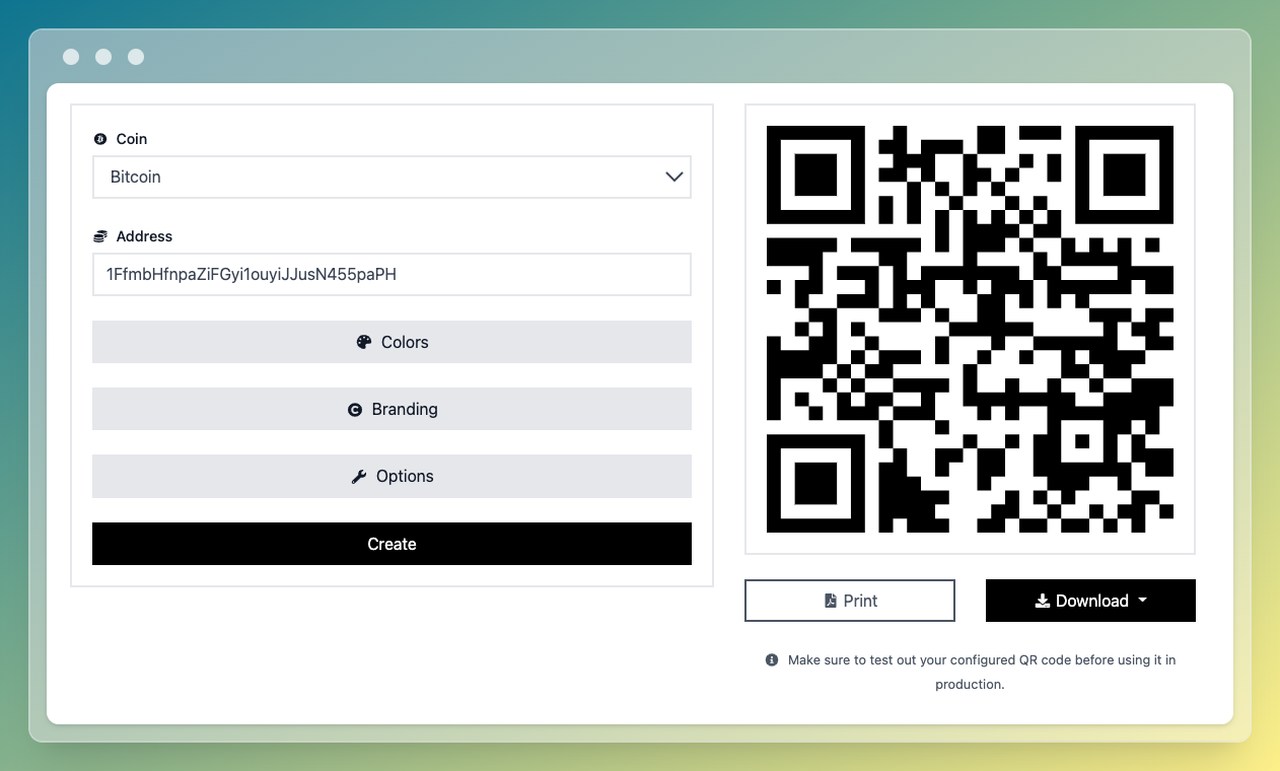Introduction
Welcome to the world of Bitcoin, the revolutionary digital currency that has been making waves in the financial industry. As you delve into the fascinating realm of cryptocurrencies, you will come across various terms and concepts that might seem overwhelming at first. One of the fundamental concepts in Bitcoin is the private key, a crucial component that ensures the security of your digital assets.
A Bitcoin private key is the secret code that allows you to access and manage your Bitcoins. It is a unique and complex string of characters that serves as your personal digital signature. Understanding what a Bitcoin private key looks like and how it is structured is essential for you to navigate the cryptocurrency ecosystem confidently.
In this article, we will explore the intricacies of Bitcoin private keys. We will unravel the process of generating a private key, examine its anatomy, and discuss the various representations and formats it can have. Additionally, we will emphasize the importance of safeguarding your private key to protect your Bitcoin holdings from unauthorized access.
By the end of this article, you will have a clear understanding of what a Bitcoin private key looks like and its significance in securing your digital wealth.
But first, let’s dive into the fascinating process of generating a Bitcoin private key.
How is a Bitcoin private key generated?
Generating a Bitcoin private key involves complex mathematical calculations that ensure its uniqueness and security. To start, it is crucial to understand that a Bitcoin private key is a random 256-bit number, which means it can have a vast number of combinations.
The process of generating a Bitcoin private key begins with the use of specialized software or hardware tools called random number generators (RNGs). These RNGs produce a sequence of random numbers that are used to create the private key. The randomness is crucial to ensure that the private key is unique and cannot be easily guessed or replicated by anyone.
Once the random number is generated, it is passed through a cryptographic function called a hash function. This function converts the random number into a fixed length alphanumeric string, which becomes the Bitcoin private key. It is important to note that this conversion is a one-way process, meaning it is virtually impossible to reverse-engineer the private key from this alphanumeric representation.
In essence, the process of generating a Bitcoin private key relies on the principles of cryptography to ensure its security. The use of a random number generator and the conversion through a hash function create a private key that is virtually impossible to guess or replicate, providing a robust security measure for your Bitcoins.
Now that we understand how a Bitcoin private key is generated, let’s delve deeper into its anatomy and explore the components that make up this essential piece of cryptographic code.
Anatomy of a Bitcoin private key
A Bitcoin private key consists of a unique set of characters that form a 256-bit number. This number is represented in various formats, such as hexadecimal or Base58, to make it more user-friendly. Let’s break down the different elements that comprise a Bitcoin private key:
- Randomness: As mentioned earlier, the most crucial aspect of a private key is its randomness. It is generated using techniques that ensure there is no discernible pattern or predictability in its sequence.
- 256-bit length: The private key is a 256-bit number, which means it can have a virtually infinite number of combinations. This length provides an extremely high level of security for your Bitcoin holdings.
- Alphanumeric characters: The private key is typically represented using a combination of alphanumeric characters, which includes both letters (A-F) and numbers (0-9). This ensures compatibility across different systems and encoding formats.
- Checksum: To enhance the integrity of a Bitcoin private key, it often includes a checksum. The checksum is a mathematical calculation derived from the other components of the key, which acts as an additional layer of validation when using the key.
- Public key derivation: From a Bitcoin private key, a corresponding public key can be derived. The public key is used for encryption and verification purposes and is mathematically linked to the private key. However, it is important to note that the private key cannot be derived from the public key.
Understanding the anatomy of a Bitcoin private key is essential for comprehending its uniqueness and security. The random nature of its generation, the lengthy 256-bit size, the alphanumeric representation, and the presence of a checksum all contribute to ensuring the confidentiality and integrity of your Bitcoin assets.
Now that we have explored the components of a Bitcoin private key, let’s discuss the different formats in which it can be represented.
Format of a Bitcoin private key
A Bitcoin private key can be represented in several formats, each with its own advantages in terms of usability and security. Let’s explore the most common formats used to represent a Bitcoin private key:
- Hexadecimal: The hexadecimal format is a widely-used representation of a Bitcoin private key. It consists of alphanumeric characters ranging from 0 to 9 and A to F. The hexadecimal format is often used in technical environments and is compatible with most Bitcoin wallets and software.
- Base58: The Base58 format is another popular encoding method for Bitcoin private keys. It is a human-friendly format that eliminates the use of easily misinterpreted characters, such as 0 (zero), O (capital letter O), l (lowercase letter L), and I (capital letter I), to prevent confusion.
- WIF (Wallet Import Format): The Wallet Import Format is a standardized format for representing Bitcoin private keys. It is a Base58-encoded format that includes a prefix in order to differentiate private keys from other data. WIF allows for easy import of private keys into various Bitcoin wallet software.
- BIP38: BIP38 (Bitcoin Improvement Proposal 38) is an encryption method for Bitcoin private keys. It allows users to encrypt their private keys with a password, providing an additional layer of security. BIP38-encoded private keys can be represented in both hexadecimal and Base58 formats.
- QR Codes: Bitcoin private keys can also be represented as QR codes. This format allows for easy scanning and importation of private keys using mobile wallets or other QR code scanning applications.
It is worth mentioning that the format in which a Bitcoin private key is represented does not affect its fundamental security. However, using a user-friendly format like Base58 or QR codes can simplify the process of manually entering or scanning private keys.
Now that we have examined the various formats in which a Bitcoin private key can be represented, let’s discuss the importance of securing your private key to protect your Bitcoin holdings.
Common representations of Bitcoin private keys
Bitcoin private keys can be represented in different ways to cater to the needs and preferences of users. Let’s explore some of the common representations of Bitcoin private keys:
- Plain Text: The most straightforward representation of a Bitcoin private key is plain text, which is the unencrypted hexadecimal or Base58-encoded key. While this format may be easy to read and copy manually, storing private keys in plain text is highly discouraged due to the risk of unauthorized access.
- Encrypted Text: To enhance the security of private keys, they can be encrypted using password-based encryption algorithms. This involves applying cryptographic techniques that require a user-defined password to decrypt the private key. Encrypted private keys provide an additional layer of protection against unauthorized access, especially in cases where the encrypted keys are stored separately from the decryption password.
- Hardware Wallets: Hardware wallets are physical devices that store Bitcoin private keys securely. They provide an offline storage solution, keeping the private keys away from potential online threats. Hardware wallets often use a combination of encryption and strong physical security measures to protect the private keys.
- Paper Wallets: Paper wallets are a form of offline storage that involves printing the Bitcoin private key on a physical piece of paper. Paper wallets are often generated using software that can create a printable representation of the private key. These wallets are considered secure as long as they are generated on a trusted and secure device and are stored in a safe and confidential manner.
- Mnemonic Phrases: Mnemonic phrases or seed phrases are another method of representing a Bitcoin private key. These phrases consist of a sequence of random words derived from the private key. By using a specific algorithm, these words can be used to recover the private key. Mnemonic phrases are often used in hierarchical deterministic (HD) wallets, which can generate multiple Bitcoin addresses from a single seed.
It is crucial to choose a representation of the Bitcoin private key that aligns with your security requirements and level of technical proficiency. Hardware wallets and encrypted text offer enhanced security, while paper wallets and mnemonic phrases provide offline storage options. Regardless of the representation, it is essential to protect your private keys from unauthorized access to safeguard your Bitcoin holdings.
Now that we have explored the common representations of Bitcoin private keys, let’s dive into the importance of securing your private key.
Importance of securing your private key
The security of your private key is of utmost importance when it comes to protecting your Bitcoin assets. Your private key serves as the digital signature that grants you access and control over your Bitcoins. Failing to secure your private key can expose you to the risk of losing your funds to hackers, scams, or unauthorized individuals. Here are some key reasons why securing your private key is crucial:
- Ownership and control: Your private key is the ultimate proof of ownership and control over your Bitcoins. With your private key, you have the authority to transfer, spend, or sell your digital assets. Without proper security measures, unauthorized access to your private key can lead to the loss of control over your funds.
- Protection against theft: Bitcoin transactions are irreversible, which means that if your Bitcoins are stolen or sent to the wrong recipient, there is no way to reverse the transaction. Securing your private key ensures that only you have the ability to authorize transactions, reducing the risk of theft and fraudulent activity.
- Prevention of unauthorized access: Cryptocurrency-related scams and hacking attempts are prevalent in the digital landscape. Securing your private key prevents unauthorized individuals from gaining access to your Bitcoin holdings. By implementing robust security measures, such as encryption, offline storage, and multi-factor authentication, you can significantly reduce the risk of unauthorized access to your private key.
- Data loss prevention: Accidental loss or deletion of your private key can result in permanent loss of access to your Bitcoins. It is crucial to backup your private key and store it in multiple secure locations. By following proper backup procedures, you can ensure that even if you lose access to one copy of the private key, you can still recover your bitcoins using the backup.
- Peace of mind: Securing your private key provides peace of mind, knowing that your Bitcoin holdings are protected. It allows you to engage in the cryptocurrency ecosystem without constant worry about the security of your assets. By implementing best practices for securing your private key, you can focus on utilizing and enjoying your digital wealth.
Remember, the responsibility of securing your private key ultimately lies with you. By implementing robust security measures and staying vigilant against potential threats, you can safeguard your Bitcoin holdings and enjoy the benefits of this revolutionary digital currency.
Now that we have emphasized the importance of securing your private key, let’s discuss some best practices for storing your private key securely.
Best practices for storing your private key
Properly storing your Bitcoin private key is crucial to ensure the safety and security of your digital assets. Here are some best practices to consider when storing your private key:
- Use a hardware wallet: Hardware wallets are considered one of the most secure methods to store your private key. These physical devices store your private key offline, away from potential online threats. Use a reputable and trusted hardware wallet that offers robust security features.
- Implement strong passwords: If you choose to encrypt your private key, use a strong, unique password. Avoid using common or easily guessable passwords. A strong password includes a combination of uppercase and lowercase letters, numbers, and symbols.
- Backup your private key: Regularly backup your private key and store it in multiple secure locations. Consider using offline or physical backup solutions, such as paper wallets or encrypted USB drives. Ensure that backups are stored in a safe and confidential manner to prevent unauthorized access.
- Keep your private key offline: Storing your private key on a device connected to the internet increases the risk of it being compromised. Whenever possible, keep your private key in offline storage, such as a hardware wallet or a paper wallet. This reduces the chances of unauthorized access.
- Use multi-factor authentication: Enable multi-factor authentication (MFA) whenever possible. This adds an extra layer of security by requiring additional authentication factors, such as a second device or biometric verification, to access your private key.
- Regularly update and patch software: Keep your software and wallets up to date with the latest security patches. Developers frequently release updates to address vulnerabilities and improve security. Regularly checking for updates and applying them helps protect against potential threats.
- Maintain privacy and discretion: Avoid sharing your private key with others and be cautious of phishing attempts or scams. Be mindful of the information you share online and only provide your private key to trustworthy and reputable sources when necessary.
By following these best practices, you can significantly increase the security of your private key and protect your Bitcoin holdings. Remember, the security of your private key is your responsibility, and taking proactive steps to safeguard it will help ensure a safe and worry-free experience in the world of cryptocurrencies.
Now that we have discussed the best practices for storing your private key, let’s summarize the key points covered in this article.
Conclusion
In conclusion, understanding the characteristics and security of Bitcoin private keys is essential for anyone venturing into the world of cryptocurrencies. A Bitcoin private key is a unique and complex code that grants you ownership and control over your digital assets. It is crucial to generate and store your private key securely to protect your Bitcoins from theft or unauthorized access.
We explored how a Bitcoin private key is generated through random number generation and cryptographic functions. The anatomy of a Bitcoin private key consists of randomness, a 256-bit length, alphanumeric characters, a checksum, and the ability to derive a corresponding public key. Representations of Bitcoin private keys include formats such as hexadecimal, Base58, WIF, BIP38, and QR codes.
Securing your private key is of paramount importance to protect your Bitcoin holdings. By applying best practices, such as using a hardware wallet, implementing strong passwords, regularly backing up your key, keeping it offline, and using multi-factor authentication, you can significantly enhance the security of your private key.
Remember, the responsibility of securing your private key rests with you. Stay vigilant against potential threats, be cautious with whom you share your private key, and regularly update your software to maintain a high level of security. By following these precautions and best practices, you can safeguard your Bitcoin holdings and enjoy a worry-free experience in the world of cryptocurrencies.
Now armed with knowledge about Bitcoin private keys, go forth and navigate the world of cryptocurrencies confidently, knowing that your digital assets are safe and secure.

























